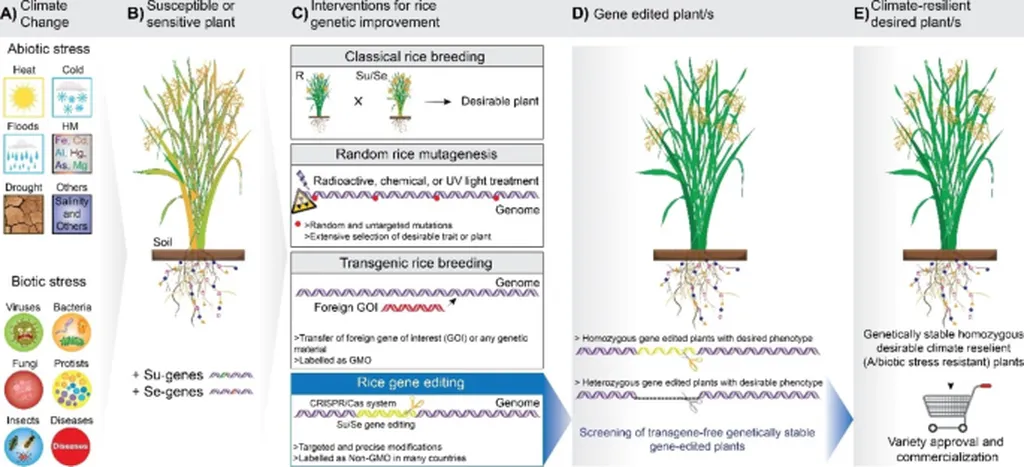In the heart of Punjab, India, a groundbreaking journey in agricultural biotechnology is unfolding, one that promises to reshape the future of crop improvement and, by extension, global food security. At the forefront of this revolution is Unnati Sharma, a researcher from the Department of Molecular Biology and Genetic Engineering at Lovely Professional University. Her work, published in the journal *Discover Plants* (which translates to *Exploring Plants* in English), offers a compelling insight into the transformative potential of CRISPR-Cas9 technology, particularly in enhancing rice genetics.
CRISPR-Cas9, a gene-editing tool that has taken the scientific world by storm, allows researchers to make precise changes to an organism’s DNA with unprecedented ease and accuracy. Sharma’s review delves into the technology’s journey, from its initial discovery to its current applications in crop improvement. “CRISPR-Cas9 has opened up a world of possibilities in plant breeding,” Sharma explains. “It’s not just about creating genetically modified crops; it’s about enhancing traits that are already present in a plant’s genome, making them more resilient and productive.”
The implications for the agricultural sector are vast. Rice, a staple food for more than half of the world’s population, stands to benefit significantly from this technology. Sharma’s research highlights how CRISPR-Cas9 can be used to improve disease resistance, abiotic stress tolerance, yield enhancement, and nutritional improvement in rice. “Imagine a rice plant that can withstand drought, resist pests, and produce a higher yield—all while requiring fewer resources,” Sharma envisions. “This is not a distant dream; it’s a reality we’re steadily approaching.”
However, the path is not without its challenges. Off-target mutations, regulatory hurdles, and public perception are significant obstacles that need to be addressed. Sharma acknowledges these challenges but remains optimistic about the future. “Every technological advancement comes with its own set of challenges,” she says. “But with continued research and open dialogue, we can overcome these hurdles and harness the full potential of CRISPR-Cas9.”
Looking ahead, Sharma sees a future where multi-trait genome editing, improved delivery mechanisms, and cross-technology integration become the norm. These advancements could revolutionize plant breeding, contributing to sustainable agriculture solutions and ensuring food security for a growing global population.
As Sharma’s research demonstrates, CRISPR-Cas9 is more than just a tool—it’s a catalyst for change. It’s a beacon of hope for farmers, a promise of sustainability for the environment, and a testament to human ingenuity. And as we stand on the brink of this agricultural revolution, one thing is clear: the future of crop improvement is here, and it’s more exciting than ever before.

